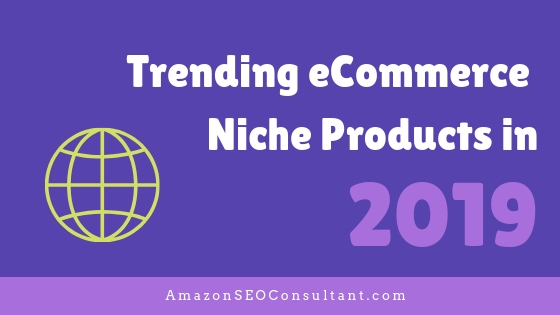
Influencer marketing is arguably the hottest topic in digital marketing right now and as more and more businesses get involved, it’s only going to get bigger.
You only need to take a quick look at Google Trends to get an idea of how quickly influencer marketing came about and where it’s going in the future:
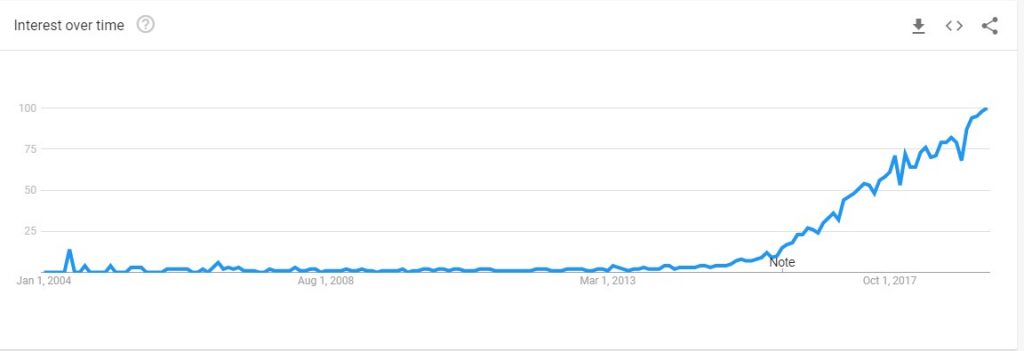
Despite this, it isn’t just as simple as sending your product to some of the most popular people on Instagram and hoping for the best.
With micro-influencers, brand ambassadors, influencer networks and other related terms being thrown about, you might feel at a loss when it comes to how influencer marketing works.
This complete guide will solve all that, beginning with the basics of influencer marketing and taking you through some advanced strategies to get the most out of it.If you’re involved in selling products online, you need to be onboard with influencer marketing now.
Luckily, we’ve got your back.
Let’s start from the beginning:
What are Influencers?
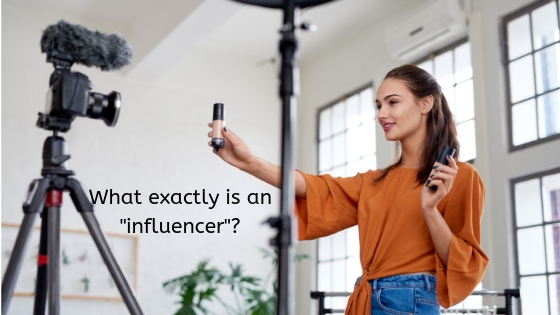
Essentially, they are somebody who is so respected and followed within that niche and considered to have such knowledge and authority within it, that they are able to change the buying habits of their followers via recommendations, sharing their preferences, posting reviews etc.
Examples can include:
- A make-up artist recommending a certain makeup brand to their followers
- A fashion icon wearing a certain brand which then gains popularity in the fashion world
- A famous bodybuilder using a certain brand of gym clothing or equipment
- A known marketing expert running a niche marketing blog and recommending certain tools or agencies
In 2019, people are rapidly losing trust in old-fashioned marketing messages.
A study by marketing platform Mention Me found that 71% of modern consumers would rather find new brands themselves via friends recommendations, browsing the web or browsing shops as opposed to trusting old-school forms of advertising such as TV ads, magazines and billboards.

In a world where trust in traditional marketing is rapidly fading, people still trust recommendations from other people.
Whether it’s the importance of Amazon reviews, the boosts in conversion rates caused by reliable social proof, or influencer marketing itself – the evidence is all around us.
However, there are a few different types of influencers, many of which need to be approached and treated a little differently in order to promote your products as effectively as possible:
Types of Influencers

What is Influencer Marketing?
Ok, so we’ve covered what and who influencers are and how different types often need to be approached in different ways.
Now it’s time to dive into influencer marketing itself and what it actually means, before moving further on to some influencer marketing best practices.
If you already have a basic grasp of influencer marketing and are looking for some proven strategies, go ahead and scroll past this section.
If you’re here for the basics or one click away from buying Influencer Marketing for Dummies, stay right here:
Influencer Marketing Definition
Influencer marketing (also influence marketing or social media influencer) is a form of marketing in which focus is placed on influential people rather than the target market as a whole on social media. It identifies the individuals who have influence over potential customers and orients marketing activities around these influencers.
Source: Wikipedia
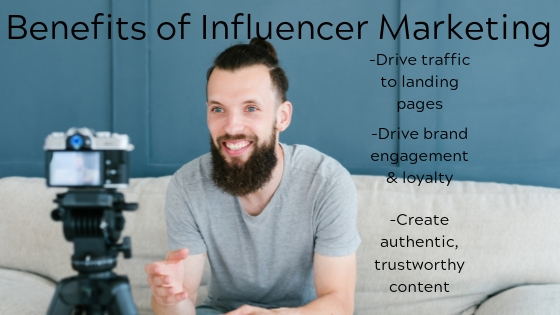
When Did Influencer Marketing Start?
However, it stepped up hugely as a marketing strategy in the late 20th Century with celebrity influencers beginning to associate themselves with brands via television and magazine advertising.
Since the rise of social media and the ability for almost anybody to build a following, influencer marketing has gradually become one of the most talked about and effective forms of marketing.
The growth has been absolutely explosive – according to an eMarketer study, the total amount spent by marketers on influencer marketing in 2017 was $570 million, whereas, in 2018, $1.6 billion was spent on Instagram sponsored posts alone.
eMarketer also recently posted these survey results that paint a picture of business worldwide moving rapidly towards influencer marketing and eCommerce in general:
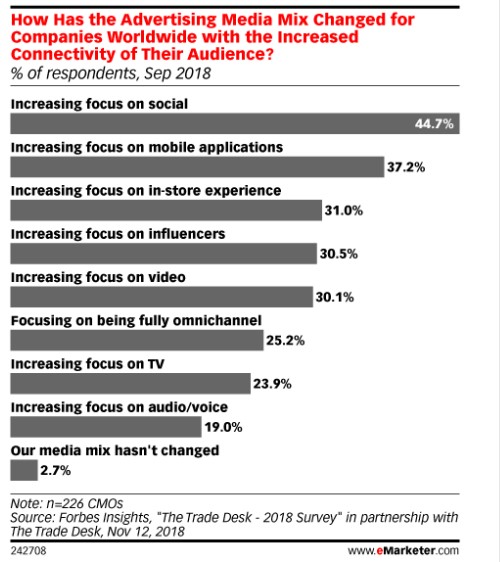
Will Influencer Marketing Last?
If you’re interested in jumping on board the influencer train but are worried about the longevity of this marketing technique, don’t be.
A Linquia study found that 39% of marketers around the world are planning on increasing their influencer marketing budget.

Sssniperwolf, one of the most successful influencers today, told Forbes:
I think for 2019 we will see brands start to look more towards longer-term partnerships with influencers, as opposed to just one-offs, as they start to see the long-term value of being able to tell an authentic and consistent story to an influencers’ audience over time. Also, brands are finding it is more effective to promote over social media than traditional media.
What is Micro Influencer Marketing?
Micro-influencer marketing can be a way to benefit from influencer marketing without this high initial investment.
A micro-influencer is essentially a social media personality who is focused on a specific niche, but with a smaller amount of followers (often 15,000 – 50,000 but can be as low as 2,000).
You might be wondering why you’d want to work with people like this instead of established influencers with millions of followers, but there are plenty of reasons:
- It’s way cheaper. Successful influencers are used to charging a lot for what they do. If their pricing turns you away, there are plenty of others looking for their services. Micro-influencers can charge as little as $50 per post and some are even happy to do it for free, with the product itself being their only payment
- It’s easily scalable. You can post to one account with 5 million followers, but it’ll cost you tens of thousands of dollars. Or, you can post to 100 accounts with 50,000 followers, reaching the same size audience for likely much less investment.
- Better engagement. While it’s tempting to use follower counts as your main metric, a person’s followers are worthless if they aren’t engaging with the influencers posts day by day. Micro-influencers usually have a much higher level of engagement than bigger influencers, often due to the fact they have the time to engage with their followers and are still attempting to build their audience.
- They are often disproportionately authoritative in their fields: Smaller influencers are often normal people who are particularly enthusiastic or knowledgeable about their niche. They are usually believable, credible and accurate. This means that while their communities of followers are smaller than large influencers, they are loyal, invested and much more likely to trust any recommendations that are posted.
How Influencer Marketing Works
These days people are becoming more and more distrustful of traditional marketing speak and the claims made by businesses, so this is a way of getting across the same message in a way that can be trusted.
For example, if you’re interested in learning about cryptocurrency trading and so you begin following somebody you believe to be an expert, over time you will learn more and more from them and begin to consider them a real authority in the field.
If they then tell you a certain trading platform is better than another, you are much more likely to believe them than if you were simply told this by a billboard or corporate website.
In short, the answer is trust.
How Effective is Influencer Marketing?
Your next question may be “does influencer marketing work?”
The answer is a resounding yes.
In some studies into the effectiveness of influencer marketing and how it compares to other forms of marketing, the following statistics were found:
- 86% of women use social media for purchasing advice
- 70% of teens trust influencers more than traditional celebrities
- For every $1 spent on influencer marketing campaigns, companies earn $6.50
Linqia also found that as long as an influencer is creating high-quality content, their audience typically won’t care that it’s sponsored, meaning customers are much less likely to be turned off by influencer marketing posts than they are by other forms of marketing.

We’re hoping you can see by now that influencer marketing is a huge part of digital marketing in the future and that ignoring the potential of promoting your product via influencer campaigns could be dangerous for the future of your business.
With that in mind, we will take you through the steps of building an effective influencer marketing strategy, running your influencer outreach services, and use examples from some of the best influencer marketing campaigns, showing you how simple it is to benefit from this new and promising marketing strategy.
Here we go:
Step 1: Defining Your Strategy & Finding Influencers
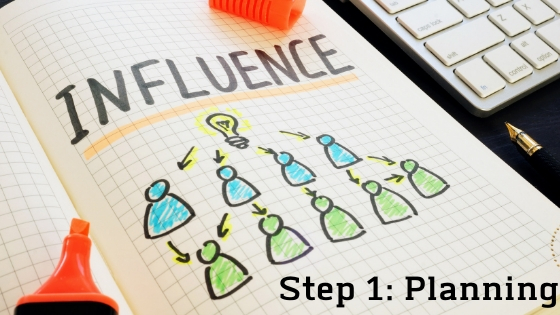
This is arguably the most important step, especially if you’re trying to do influencer marketing on a budget.
You need to figure out your main aim, your target audience, and how you can provide value to that audience.
Let’s break it down into simple steps:
Define Your Aims
Now, your aims here might be pretty simple but without defining them first, your social influencer campaigns could well become a mess of different posts where it’s difficult or almost impossible to track your successes and failures.
Knowing what you want to achieve with your influencer marketing campaigns also makes it a lot easier to choose specific product influencers and specific types of posts.
Your aims don’t need to be complicated or over-optimistic.
They can be as simple as:
- Increasing sales of a specific product by a certain percentage
- Increasing site traffic or traffic to a specific landing page by a certain percentage
- Achieving a larger audience for your own social media pages
- Increasing the visibility of your brand within a specific target audience or niche
- Potentially, in the case of larger influencer marketing programs, all of the above
Once you’ve ironed out these targets and figured out exactly what you want to achieve with your influencer strategy, you can target not only which influencers you want to work with, but which social networks too.
For example, if you sell a highly visual product that depends on high-quality imagery to sell, Instagram & Pinterest are likely your best friends.
If you’re in a technical niche and want to push detailed knowledge of your product, it features and how it differs from other products, it might well be better to target niche blogs and influencers who are known for writing in-depth on the subject.
The most important thing is to remember to make your targets SMART, especially when it comes to being measurable.
“Boost awareness of our product on Instagram” means very little and could be marked as achieved with one share, “Boost Instagram follower count by 25% by October” is a lot more sensible and allows you to track your progress before the deadline.
Decide on Your Target Audience
It may well be a good idea to spend some time creating personas to get this part right.
At the end of the day, you can’t select the best influencers to work with and come up with the best kinds of posts if you don’t know exactly who you’re targeting.
You need to work with influencers who are considered authorities in your niche and are able to influence their followers to buy your product, so the more defined your niche is, the easier this will be.

For example, if you’re selling a new makeup or cosmetics item, a popular makeup artist with an online following is likely to be a powerful influencer for you.
A singer who isn’t particularly known for their skills with or knowledge of makeup?
Not so much.
Decide Which Influencers Will Work for You
Doing this without the previous two steps would be near impossible, but once you know your aims and who you’re targeting, it suddenly becomes a lot easier.
A social media influencer with an audience who is interested in the same things as your target audience, and who has a loyal fanbase that regularly engages with them, is the ideal thing you’re looking for.
From micro-influencers to celebrities, you have a lot of potential types of influencer to look into. If you are looking for more technical/knowledgeable influencers are opposed to the celebrity type, an effective strategy can be to search for blog posts on topics within your niche, and look into any author names that come up regularly.
Hashtags centred around your niche are another great place to look, as most influencers within your niche will likely be engaging with those hashtags semi-regularly.
Once you’ve come up with a list of influencers you want to work with, the next step is contacting them!
Let’s take a look at influencer outreach strategy:
Step 2: Influencer Outreach Strategies

You can, of course, work with an agency to handle your influencer outreach, and if you can find one that’s low priced enough and experienced then this might well be your best option.
For established businesses, it may be better to let experts handle it so that your time is freed up, but if you’re researching influencer marketing for startups, limited resources may mean it’s better to do this yourself.
Let’s look at how to do influencer outreach effectively and how to improve your chances:
Influencer Outreach Strategies
Once you’ve assembled your list of influencers, it’s time to start contacting them.
Remember, they are constantly receiving requests to work with different businesses, and so just outright asking immediately will make it very hard to stand out from the crowd.
It’s a much better idea to take it slow and steady, reaching out to them just to explain what you do and are trying to achieve, and trying to build a relationship with them over time.

Remember, influencers are mostly focused on building their own following and expanding their own business. They are not a marketing agency and they don’t exist to help you.
This can mean that even if you’re a global corporation that’s offering them a high amount of money, they may well turn you down.
Your best chance comes from:
- Having a product that they genuinely believe will be useful and of interest to their following.
- Building a friendly and genuine relationship with them over time.
That second one can be pretty time consuming and may be a reason for you to go with an influencer marketing agency instead, but if you have the time to do it, building a relationship with an influencer can not only lead to a long-term situation where they regularly talk about your products, but you will likely gain followers from their audience seeing you regularly interact too.
The following example of a “let’s start a relationship” type email was posted in Entrepreneur by Aaron Agius:

While you probably shouldn’t copy this word for word, it’s a great example of the friendly, informal tone and mutually beneficial idea you want to get across.
Here are some other tips that can help to get you noticed by influencers within your field:
- Follow their social media pages, YouTube channels and subscribe to their blog newsletters. Don’t just be a silent follower though, reply to their posts and engage with what they’re talking about.
- No pitching or business talk – engage with them as a friend and somebody who is interested in their content first.
- Share their posts with a comment, and respond to any questions, discussion points or polls they ask or put to their followers
- Post a content piece like “tips from the 8 best experts on (your niche)” including them
Once you’ve done this, your influencer should be aware enough of you to at least recognise your name in a Twitter/Instagram DM or an email subject line.
Once this is the case and you’re pretty sure the influencer sees you as somebody who’s genuinely interested in their niche and their own posts, as opposed to a business just looking for quick cash, you can finally make your pitch.
In order to do this successfully, you should focus on the why and how they benefit from advertising your products. This will of course usually be payment but you may wish to add another carrot on a stick such as including them in an “expert roundup” post or anything else you are able to do that will benefit them (make sure you keep promises relating to this though or you’ll burn bridges forever!).
It’s also a good idea to be clear about any potential deadlines, as influencers are often prioritising and scheduling multiple posts and so if yours isn’t seen as a priority it can be easily missed.
When sending your pitch, avoid any and all business or formal speak, approaching it just as you would a casual DM to a friend.
Remember, they are likely receiving several similar pitches a day, and even now that they know your name, your pitch could easily be missed amongst all of that, so do everything you can to make your subject line effective “clickbait”, using subjects such as:
- I have some free stuff for your followers!
- I really want to help push your (strategy they have been focusing on a lot)
- I have a (product type) for you!
These make it much more likely that your request will be opened and read.
From there, keep the body of your email as straight-forward and concise as possible, as even after all of the groundwork you’ve done, you are still technically competing for their attention.
Influencer Outreach Email Template
While we’ve already shown you a couple of email examples for influencer outreach, here is a great example of a follow-up email for use if you don’t get a response to your original pitch.
This comes from the marketing experts at Medium who claim they achieved a 53% response rate with it:
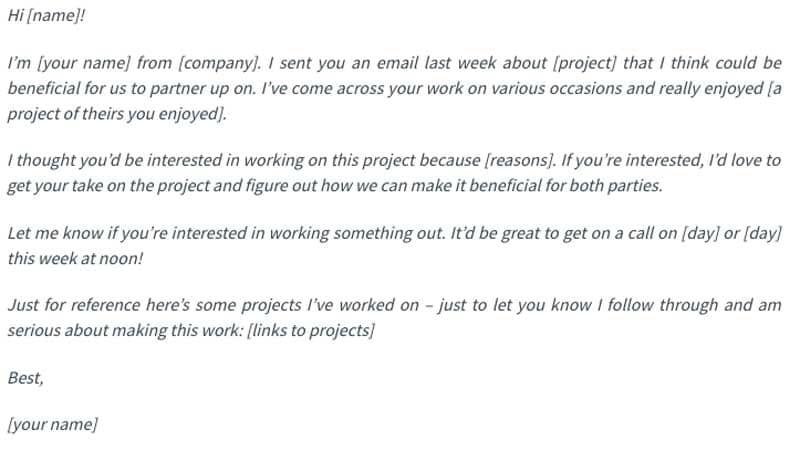
While you will likely want to tweak this to suit your own goals and conversational style, it’s an excellent foundation to work from.
Let’s look at some final tips for reaching out to influencers online:
Influencer Outreach Best Practices
- Personalise your emails and messages as much as possible – anything that seems like a mass copy and paste email will be instantly deleted with no further thought
- Keep it brief – going into the history of your business and why you’re trying to do what you are might seem like a converting technique but in reality, it will just reduce the chances of them reading the whole thing.
- It’s about them, not you – your product may be revolutionary and you may be the best company in your field, but influencers have no reason to believe or care about that. Don’t waste your time, and instead focus on what you love about them, and how working with you will help them bring more value to their audience.
What about once they accept?
What are the best practices for dealing with influencers on an ongoing basis?
Don’t worry, we have all the answers for you:
Step 3: Working with Influencers
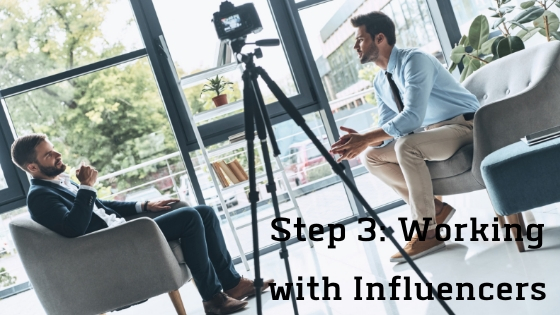
Established, successful influencers are there because they have provided such value for a length of time.
If they begin to talk about bad quality products or ones that are irrelevant to their niche, they will lose their audience and status as an influencer rapidly.
This is why you have to remember that if your product isn’t right for their audience, an influencer will often turn you down no matter how much money you offer.
Not only that but even if they accept, chances are their audience wouldn’t care about what you’re offering at all.
Once you’re certain you have the correct influencers on the correct social network to match your product and have built a relationship, here are some things you can try that both market your product and provide effective value to the influencer’s audience:
Write Guest Posts
This one takes us into traditional content marketing territory, but if your influencer has a successful blog, writing a guest post for them can allow you to position your products in front of their fanbase while also providing valuable content for them.
Just remember that it has to be a valuable blog post that genuinely provides value before positioning your products as a potential solution, instead of an outright advertisement.
Pay for a Sponsored Post
This is the most common and well-known intersection of influencer marketing and social media.
It can also be one of the cheapest and most effective, as long as you choose the correct influencers for your target audience.
It can be as simple as an Instagram model posting a picture wearing your clothes (for influencer marketing in fashion) or simply you paying for a custom blog post (for influencers with blogs) as opposed to writing your own guest post.
Run a Competition Aimed at Influencers
If you have an expensive or exclusive product that not many people on social media own, offering influencers a chance to win it is likely to convince them to get involved.
If your brand is established and well-regarded, you could even have the prize be the right to become your brand ambassador.
This provides interesting insights as your entry list may just come up with some influencers you weren’t aware of, and it is likely to result in an appreciative and excited post from the winner.
Of course, you need to target the correct influencers and offer the correct prize for this, as if you misalign this, you stand a chance of nobody being interested enough to enter.
Let the Influencers Run a Competition or Giveaway!
Another great idea is to offer 1-5 products to your influencers for them to run their own competition and give them away for free to their followers.
This has a wide range of benefits including:
- Your influencers will be very happy as they will be able to provide their fanbase with value that they couldn’t have without you
- It creates a buzz around your products and gives off the image that they’re the “it thing” in your niche right now
- If the post mentions that you provided the prizes, it puts across the message that you and the influencer work closely together, which will encourage their followers that your products are high-quality and trustworthy
- If it doesn’t, it will appear that the influencer has chosen your products off their own back, which is potentially even better
- The winners will likely be major fans of the niche or industry you work in, and may well be introduced to your product ecosystem for the first time, potentially becoming a long-term fan or even a micro-influencer for your product themselves.
Remember though, arranging a competition, selecting the winners and delivering the gifts does take some work, and you should probably pay the influencer outside of just providing the prizes.
Give Influencers Free Samples
Many influencers, especially ones with smaller audiences or micro-influencers, are willing to provide a review of a product in return for a free sample.
Larger influencers with big fanbases may still be willing to do this but will likely need payment too.
It can be as simple as an Instagram picture of them using your product, or as major as a Youtube unboxing video and in-depth review.
We would highly recommend contacting them first, as sending them an item out of the blue is unlikely to lead to a post, and they may even forget who it’s from or that they even received it if they are getting regular deliveries.
Of course, contacting them first also allows you to ask for a review instead of just sending the product and hoping for one, which increases your chances of actually getting one.
Just be careful your product is good enough first and that your influencer isn’t somebody that regularly provides angry, scathing reviews to products they don’t like, or this may backfire on you!
Of course, you can’t really ask for a “positive” review either as this just comes across shady, so selecting the correct influencer who is likely to love your product is a major factor – but, if you built that relationship properly earlier on, you should be ok.
Now that you know how to find influencers, build a relationship with them, pitch them, and use them to access their audience, let’s take a look at the ROI of an influencer marketing campaign and how to effectively manage one:
Step 4: How to Run an Influencer Marketing Campaign

The first decision you have to make is whether you’re going to let an influencer marketing agency or platform do the work for you, or handle it yourself.
While both paths require consistency and neither will make you suddenly rich, both can work and have a huge ROI as long as you take your time, don’t give up, keep a consistent eye on social media and keep nurturing those relationships.
Influencer marketing statistics and research are still in their early stages, and the metrics to use are still somewhat debatable, but most people are coming to agree that engagement is far more important than follower count.
The most effective influencers tend to be a crucial part of a tight-knit community, who know each other well and regularly swap ideas.
An influencer like this can often generate much more interest in your products much more quickly than one with 1000X the followers but little engagement or niche authority could.
An early question you’ll likely ask yourself is:
How Much Are Influencers Worth?
You can, of course, try to go the free route, only providing free products in return for reviews and posts, but the problem with this is influencers won’t feel too obligated to you and will put less effort into posts than they would if you paid them.
If you are paying them, you will likely get better results, but how much is worth paying?
How do you know when the price they quote is acceptable and when to try to barter it lower?
The main factors are:
- The influencer’s online status and reputation – how much do people trust their opinion?
- The quality of their content – is it highly regarded and is it likely to convert well?
- The quality of their audience – and more importantly, how closely it matches your own
- How well they match your brand – are their followers likely to become yours?
A good idea is to keep the most you’re willing to pay in mind, as this makes it easy to recognise when an influencer is asking more than the return is worth.
Influencer Marketing Metrics
Your ROI and metrics will likely change based on each influencer marketing campaign and the goals of that campaign.
For example, if you wanted to boost sales of a certain product, that product’s sales will be the main metric, and if you wanted more web traffic, then that’s what you need to check.
There are some general metrics that you can use to measure the success of any influencer campaign though, for example:
- The likes, comments and general engagement on each influencer post
- The different messaging you use and how it affects the above
- Additional website traffic or social media follows achieved
If you’re looking for the overall growth of your brand (and who isn’t), all of these things can be valuable KPIs and help to figure out which influencers and types of post work for you and which don’t.
Before we leave you, we’ll breakdown a checklist of everything mentioned so far.
Keeping this checklist somewhere and marking off each point as you implement them makes it easy to run a comprehensive brand influencer marketing strategy and avoid missing any of the finer details:
Influencer Marketing Checklist
- Determine your overall targets and goals for the campaign
- Decide which KPIs and metrics can help measure your success with these goals
- Decide how you’re going to find your influencers – using an influencer marketing agency, an influencer platform, or finding them yourself through active social media use
- Determine how you will decide on who to work with and what your ideal influencers should do/look like
- Plan your outreach strategy and proof up some emails
- Begin searching for influencers on your platform, via your agency or on your social network. Compare them against each other, cross off the least suitable, and build up a shortlist of the best
- Begin nurturing a relationship with the influencers on your shortlist and any others you deem worthwhile
- Make your pitches to those who still seem like a match with your brand and who would potentially be interested
- Agree on a price with those who respond in the positive, and get them moving!
- Keep regular communication with influencers throughout the whole process (but avoid being annoying)
- Once posts start to appear, keep track of the KPIs and metrics you decided on earlier.
- Make constant refinements, looking for new influencers, nurturing relationships with existing ones, and figuring out what will improve those metrics.
Need more help with your marketing strategies?
Check back for regular in-depth eCommerce guides, or check out our Case Studies to see some of the unmatched results we’ve achieved for our clients, or request a proposal to see how we can boost your profits from Amazon in the long term!

